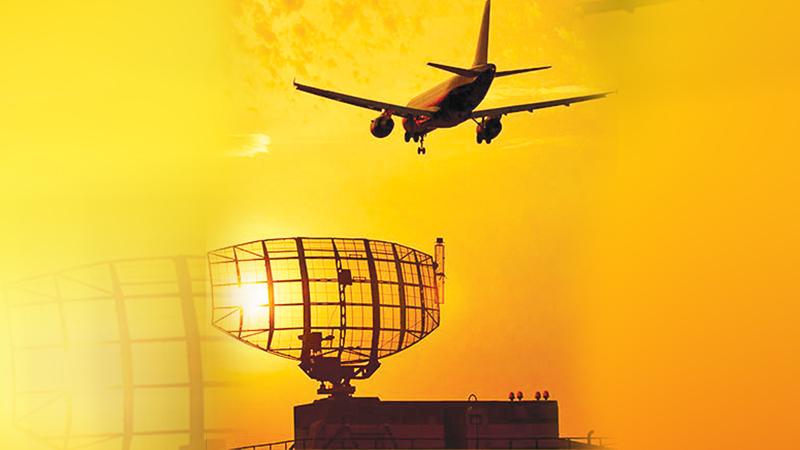
Expanding the scope of autonomy and automation had been a long-felt necessity which is presently being enhanced in a vast of applications in the spheres of small scale manned and unmanned fragments of military and civil aviation.
A safe landing of an aircraft is a result of an enormous organisational effort facilitated by an intricate system involved with novel technology, humans as well as environmental factors.
The records on the safety of aviation have been impressive over the years; the accidents reported per million take-offs have reached at an unparalleled low rate, albeit the so called target of “zero accident” is not yet in the horizon.
Experts in the field of aviation consider that on-board aircraft’s combination with the automation has done a considerable service in bringing down the number of air accidents drastically.
Activities, such as direct piloting and decision making, dispatching, route planning, controlling, hazard avoidance and weather forecasting are some of the key factors which are included in the mostly distinguished recent applications of this technology.
Accident mitigation
These novel technologies give a ray of hope with assurance to make the flying of an aircraft easier while strengthening its safety as well. A success of this nature could be achieved in a situation where many causes of aviation accidents are automatically mitigated. In general, despite the increased training given to the relevant parties, the lack of effectiveness in human decision making or execution paves the way for aviation accidents.
Dr. Stephen Cook and a group of researchers, in their research on “Advancing Autonomy in Aviation: A Holistic Approach” said, “For newer markets, such as unmanned aircraft systems (UAS) or advanced air mobility (AAM), autonomy promises to relieve the prohibitive financial cost of requiring traditional one-to-one piloting of aircraft in favour of the potential for fleet level management.”
Reduction in the needs of front-end design assurance as well as having a focus on the validity of the desired emergency and normal behaviour of the system to accomplish the tasks of having a safe flight and landing could be contributed by robust automation architectures.
Relief for pilots
Prior to the introduction of automation, to ensure that the destination is safely reached, pilots were required to make a physical manipulation in all the segments as well as that of the interpretation and response on the act of cueing within their environment.
The pilots were heavily and actively occupied, and therefore, they were considered as active operators.
But these days, due to the emergence of automated subsystems, the human operator is exempted from most of the workload. This demonstrates the automation of operational tasks. For instance, as declared by a head of a global software company which creates a platform for Robotic Process Automation (RPA), Artificial Intelligence (AI) is used in the military services of a developed country to apply automation with different tasks of F-35 aircraft. He said that before the application of automation, though so much of data was collected, there were issues in getting them off and distributing. But by now, the RPA bot (a form of intelligent software) takes the gathered data off from the F-35 aircraft and distributes them to different AI segments in the military which is able to have a critical analysis of the airplanes, mission data and data capture among many other things. An enthusiastic tendency towards virtualisation, automation and operational system interoperability is one of the most distinguishing characteristics of these exciting and impressive transformations. This wind of transformation sweeping through the aviation industry is deemed to be stronger, as and when the novel technologies persistently become obvious notably within the context of emerging intelligent technologies which have the potential of eventually ensuring an intelligent decision making; fully automated or based on technology.
An important element of aviation autonomy is its expansion across the whole gamut of the aviation system. Automated aids of immense range, such as autopilots, Ground Proximity Warning System (GPWS), Traffic Collision Avoidance System (TCAS), Flight Management Systems, Flight Directors, Global Positioning System (GPS) and Airborne Collision Avoidance System (ACAS) which have the capacity of increasing safety and effectiveness in flight operations are available with modern day aircraft.
Adeyinka Olumuyiwa Osunwusi, in the research on “Aviation Automation and CNS/ATM-related Human-Technology Interface: ATSEP Competency Considerations”, said in modern-day cockpits, “automation plays a pivotal role in maximising safety, efficiency and sustainability for both the environment and operating costs of airlines”.
On the other hand, automated passenger self-service systems and baggage handling at airports have been revolutionised by the rising capabilities of Radio Frequency Identification Technology (RFID) which is a blessing of automation in the aviation industry.
Operation cost
Since computer systems carry out most of the work, reduction in the operation cost is identified as a benefit of automation.
Automation not only improves the security and safety of the aircraft, but also contributes towards the reduction of overall airfare by saving a great deal of manual labour.
In that light, there are two parties; the airlines and the passengers equally benefit.
The more the air ticket prices are lower, more customers and more profits are assured. The pilot’s ability of handling a variety of tasks is improved by the use of ‘autopilot’.
Nowadays, pilots can have their focus on other emergency activities in the aircraft and quickly deal with any circumstance, for instance, a passenger’s requirement of emergency medical assistance, issues related with bad weather or any technical fault.
Automation contributes to the improvement of efficiency and effectiveness in the operation of aircraft while decreasing fatigue and assisting with fast flying with less fuel and a trusted assurance.
Thanks to increased automation, effective, efficient and advanced functionality in tomorrow’s aviation industry could be delivered by AI and Machine Learning.
